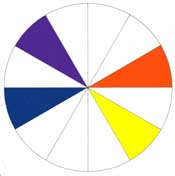How to Use the Color Wheel
Color Schemes
We use the color wheel as a tool to show the different color relationships and combinations that are possible.
To follow are the well know combinations of color:
Complementary Color Combination
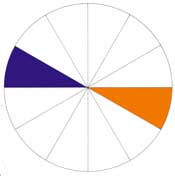
Complementary (contrasting) – these are colors that are directly opposite. When they are mixed together, they will produce grey. Using this combination enhances each color creating a strong sense of visual movement when the colors are side by side. Example of a complementary color scheme.
Split Complementary Color Combination
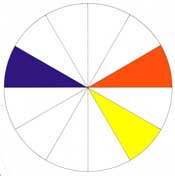
Split Complementary – select one color, then use one color either side of its complementary color. This often provides a more pleasing color scheme than a true complementary. Example of a split complementary color scheme.
Triadic Color Combination

Triad – Three colors that are equally spaced from each other i.e. the points of a triangle.
Tetrad Color Combination

Tetrad – a contrast of four or more colors.
Analogous Color Combination
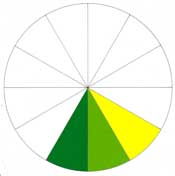
Analogous (related) – Composed of two or more harmonious or pleasing colors closely related that lie next to each other on the color wheel. This color scheme provides a pleasing effect on the eye. Example of an analogous color scheme.
Dual Complementary Color Combination
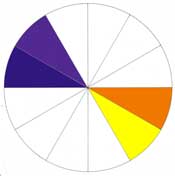
Dual Complementary – Two colors side by side and their two complementary colors opposite them on the color wheel.
Monochromatic Color Combination
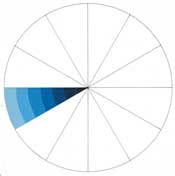
Monochromatic (tonal) – Using any shade, tint or tone of one color. It provides a peaceful and restrained color scheme. Example of a monochromatic color scheme.
Achromatic – A colorless scheme possessing no hue, using only black, white and grey. (A variation of this is possible, making a warm or cool achromatic by adding a hint of red yellow or blue.) Example of an achromatic color scheme.
Other Color Schemes
Primary – the simplest or most basic color schemes. The pure hues of red yellow and blue. They are often used for children’s play equipment and surrounding environments.
Neutral – Hues that have been neutralized by adding their compliments. The addition of black and white expands the neutral palette.
Clash – Select one color, then use one color from either side of its complementary. This provides a clash color scheme that has an assertive aggressive effect.
Remember that the color wheel is just a tool. It is a very useful tool and a good way to learn, but as with any artistic professional, experimentation and being innovative can be very rewarding. By understanding what you achieve with the color combinations from the color wheel, you can push the boundaries to create something quite original and daring.
